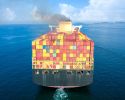Social relations influence over choices of alternative marine fuels
Contact:
This prestudy explores how social relations influence the choice of alternative marine fuels among Swedish shipowners. Adopting a cognitive perspective on decision-making, the study challenges rational models and instead highlights the role of networks, symbolic tools, and organizational dynamics. Based on twelve interviews with industry stakeholders, including operative staff from the two contributing companies Terntank and Stena Teknik and two additional Swedish shipowners, three key themes emerge: the role of networks, the temporal structure of decisions, and the symbolic use of decision-support tools.
This prestudy conclude that the process of choosing alternative marine fuels among shipowners is not linear nor isolated; rather, it reflects a complex interplay of actors, tools, timings, and symbolic meaning. Within this realm different decision support tools were identified such as:
- Life Cycle Assessment (LCA)
- Indicators
- Economic evaluations
- Backcasting
These are used not only to support decisions but also to signal rationality and responsibility. Hence tools carry both symbolic and instrumental value. The prestudy also identified challenges of future research, particularly the difficulty of accessing the organizational spaces where decisions are made. This makes it necessary to thoroughly consider both the design of studies and how industry stakeholders can contribute to overcome obstacles with access.
In sum shipowners operate in a context of uncertainty regarding future regulations, fuel prices, and technological developments. Decisions about alternative fuels are intertwined with broader strategic and operational choices, influenced by fuel availability, technology maturity, and external demands from customers, financiers, and regulators. The study reveals that decisions are shaped within networks involving researchers, suppliers, and industry associations, where technological artifacts also act as agents in the decision-making process.
-
 Ny studie: Eldrivna pendelbåtar kan effektivisera Stockholms kollektivtrafik
Ny studie: Eldrivna pendelbåtar kan effektivisera Stockholms kollektivtrafik -
 EU: Sjöfartens utsläpp ökar
EU: Sjöfartens utsläpp ökar -
 Sociala relationer påverkar val av bränsle
Sociala relationer påverkar val av bränsle -
 Sjöfartens omställning kräver ”mjukare” påtryckningar
Sjöfartens omställning kräver ”mjukare” påtryckningar -
 Hon hade avtalad tid med Kapten ynkrygg
Hon hade avtalad tid med Kapten ynkrygg -
 Lighthouse omvärldsanalys 2025 – osäkerhet och tullar präglar sjöfarten
Lighthouse omvärldsanalys 2025 – osäkerhet och tullar präglar sjöfarten -
 Se seminariet Shipping in the Marine Environment
Se seminariet Shipping in the Marine Environment -
 Vad betyder egentligen de 90 procenten?
Vad betyder egentligen de 90 procenten? -
 Hålla där...
Hålla där... -
 Ny rapport: Klimatförändringarna ett hot mot de flesta större hamnar i världen
Ny rapport: Klimatförändringarna ett hot mot de flesta större hamnar i världen

